May 1, 2016
Martha O'Kennon
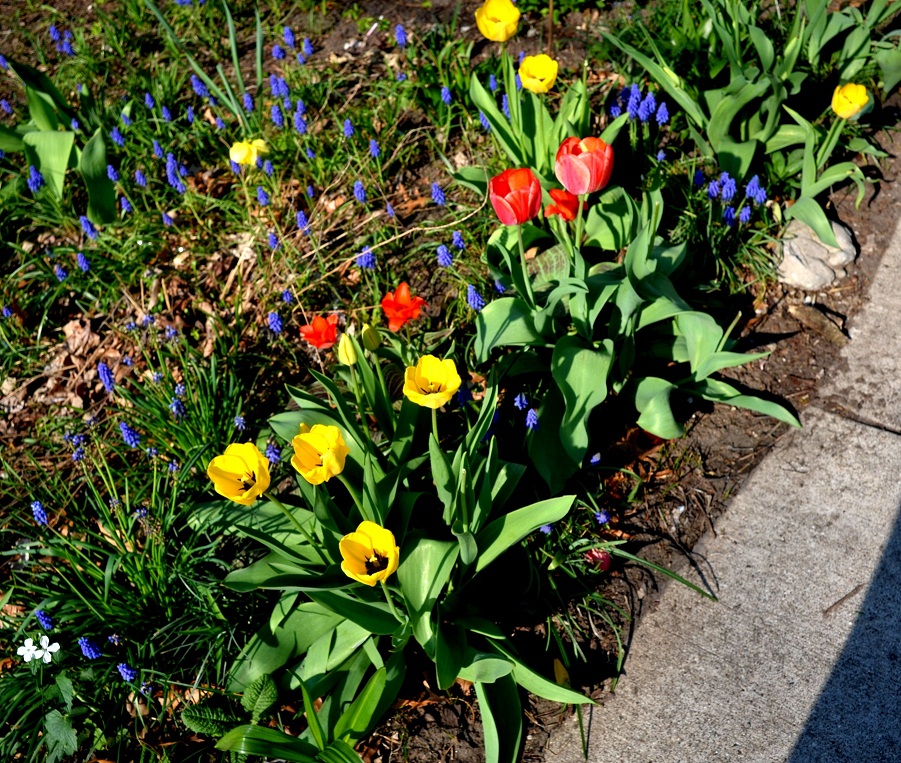


Yes, it's Spring. From last week to this, we've seen the tulips and grape hyacinths in the front garden open fully; the golden wood poppies bloom all out in the back garden; and the primroses, sparse for a few years, finally producing a dozen or more blooms per plant. Some got so large I had to separate them, one into 3 plants. Later I'll show you some more of the primroses. They were such a surprise this year! The one warm day this week the toads were back, trilling for mates and swimming in the pond. Then the temperature went down and the toads just went silent and invisible. I'm hoping that when it is reliably warm, they will be back and down to the business of laying a few hundred eggs and soon a few hundred tadpoles.
Remember that there is information in the name of the file for each image. You can see it by mousing over the image - look at the lower left of the screen.
I would try clicking on the image. If the little "+" sign appears, it means you can enlarge again. While it is in "+" mode, click on something you want to see more clearly and it will zoom to that section. Then the info is displayed in the address line above. If the image has been cropped
so that clicking on it doesn't result in a larger picture, you can always hit control-plus to increase the size of the image.
Like last week, there were several sizes and colors of ants. One kind of black ant has a reddish thorax and in some specimens that thorax seemed to be split somewhat. It may have been a wound on one individual, but the rest seem fine. This next black ant cast a scary shadow! And then there was this red one. I'd never before noticed the hairy bums on some of these!
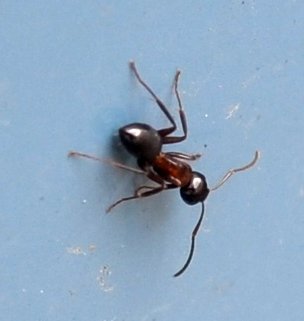
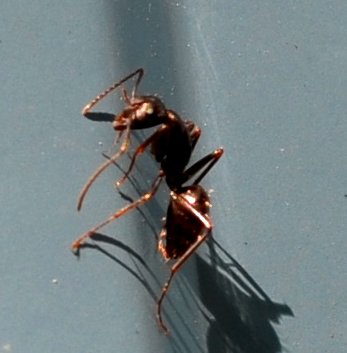
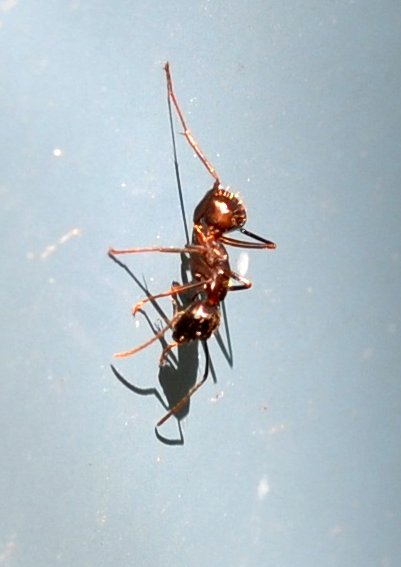
The bees are more plentiful in kind. Of course the gorgeous big loud carpenters were still here, but I think I've figured out what the mystery bee of last week was. It's the one that kept buzzing about me as I tried to go in the front door. Finally I noticed that they seemed to be climbing into tiny round holes in the siding and this one in a bead I'd used to make an acorn in a wreath. Here it is climbing in and out of a small bore bead. I remember reading that you could make a home for mason bees with small holes bored into a piece of wood. So I'm now guessing that this is a type of mason bee. It has the hairy abdomen bottom where it gathers pollen. But we have a few more hymenopterans - this small ichneumon which was dashing about so fast in the decaying stump of an old blue spruce that fell in 2007 while I was in Ireland. That's why the pictures are all quite awful. This last one is both a bit frightening and a bit wonderful. The European paper wasps, which have been in the process of scraping pulp, are making a new nest near a few older ones. Although I can't quite count the segments of the abdomen, this one wasp has the round facial pattern of a female. The nest is just above the external parts of the air conditioner in the attic room, and I'm in the process of filling the air slits with tape and cardboard to keep the wasps out and still leave me a window into their affairs for the summer. You can see one tiny white egg-shaped object, which I'm assuming is an actual egg. With any luck, I'll be able to show you what goes on from a safe place.
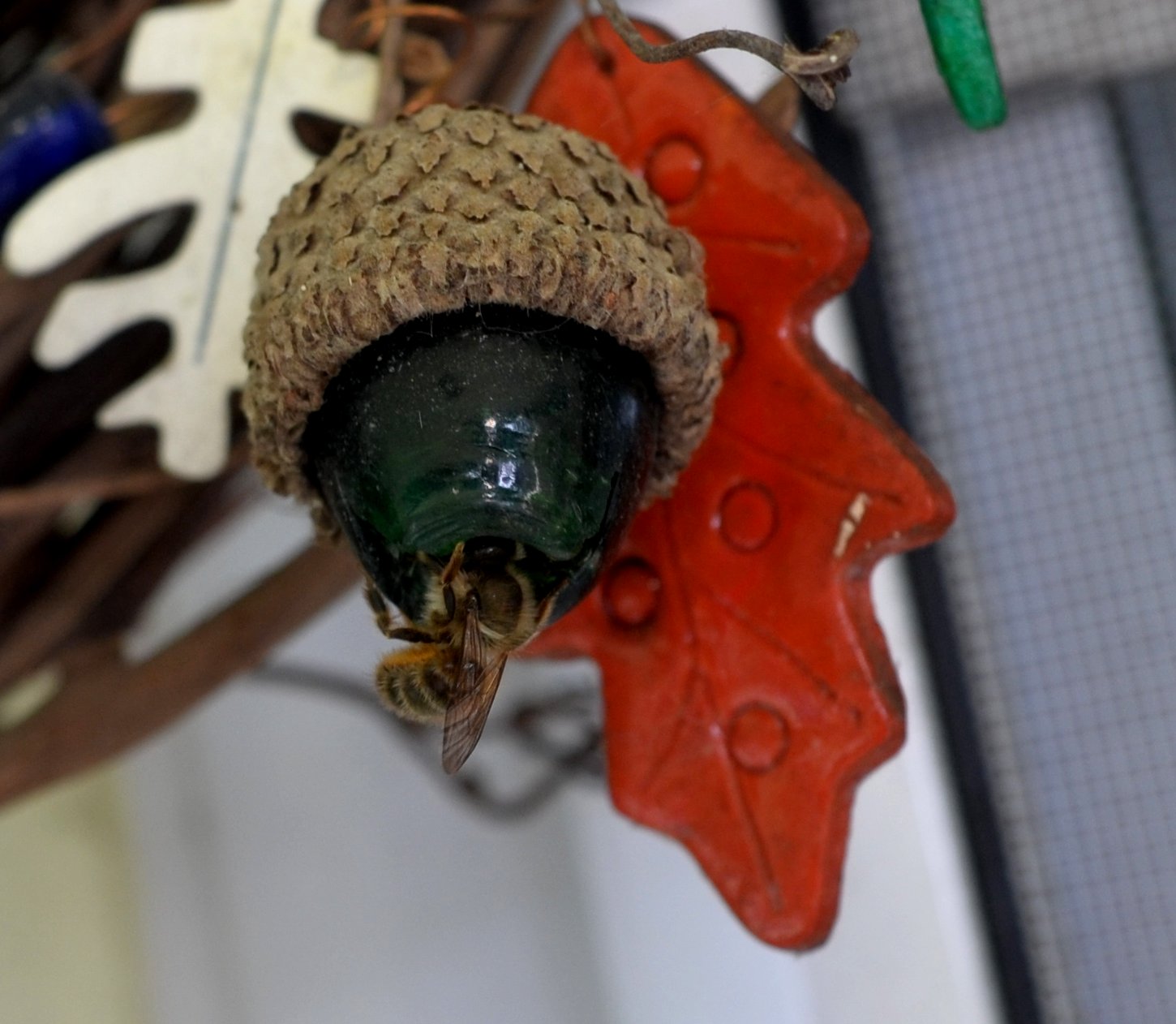 .
.
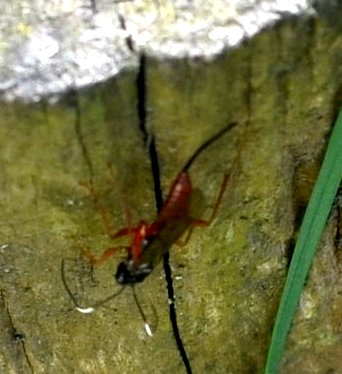
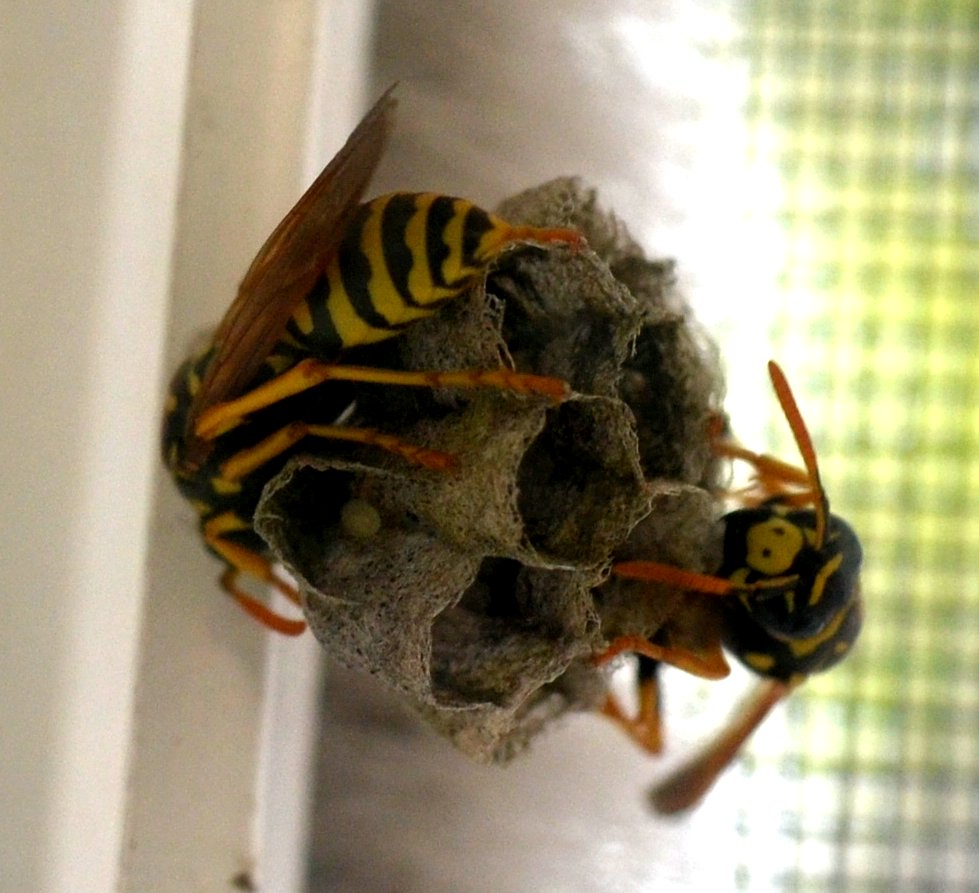
Beetles are diversifying a bit, although most of them are quite small. Here's a chubby little orange one, one with a pair of brownish spots on the hard wings, a generic "black beetle" running about the periphery of the pond, and finally a very very tiny weevil.
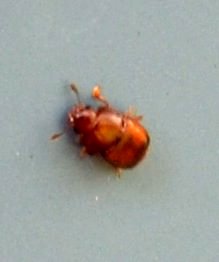
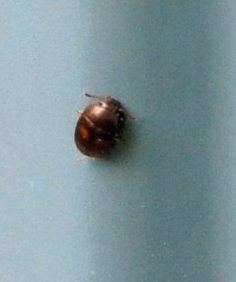

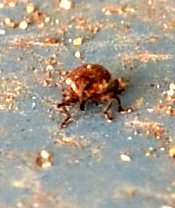
The bugs are taking their time. Here's a very little assassin bug, the brownish type. And a reddish stink bug at the tip of a leaf. This little spotted yellow leafhopper only gave me one chance at a picture!
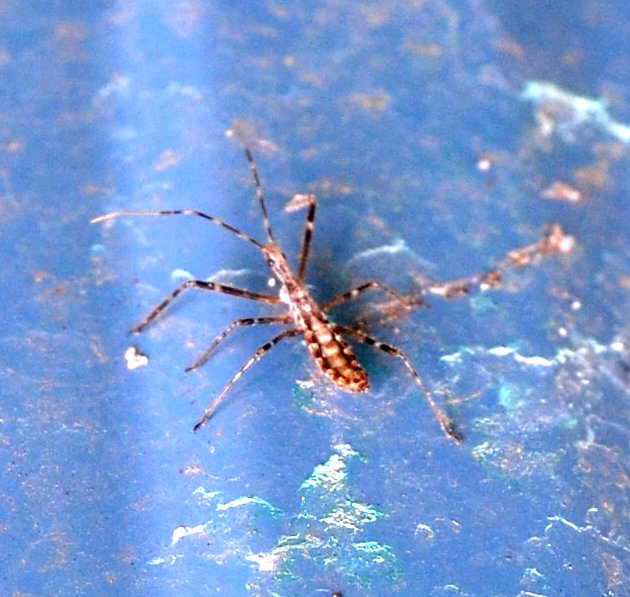
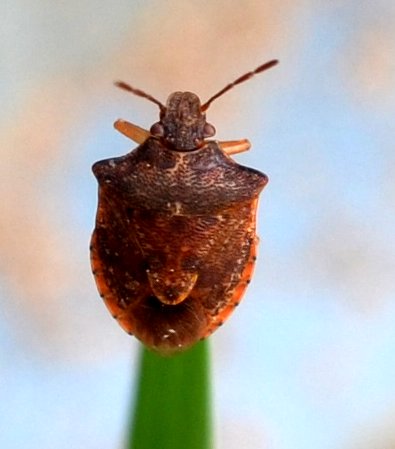
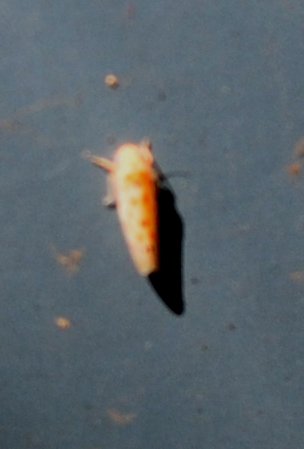
More pretty plants and flowers: The fiddleheads of the Christmas fern are out. The "money plant" (its pods look sort of like coins) is up. And that red primrose you have been seeing for several weeks is still going!
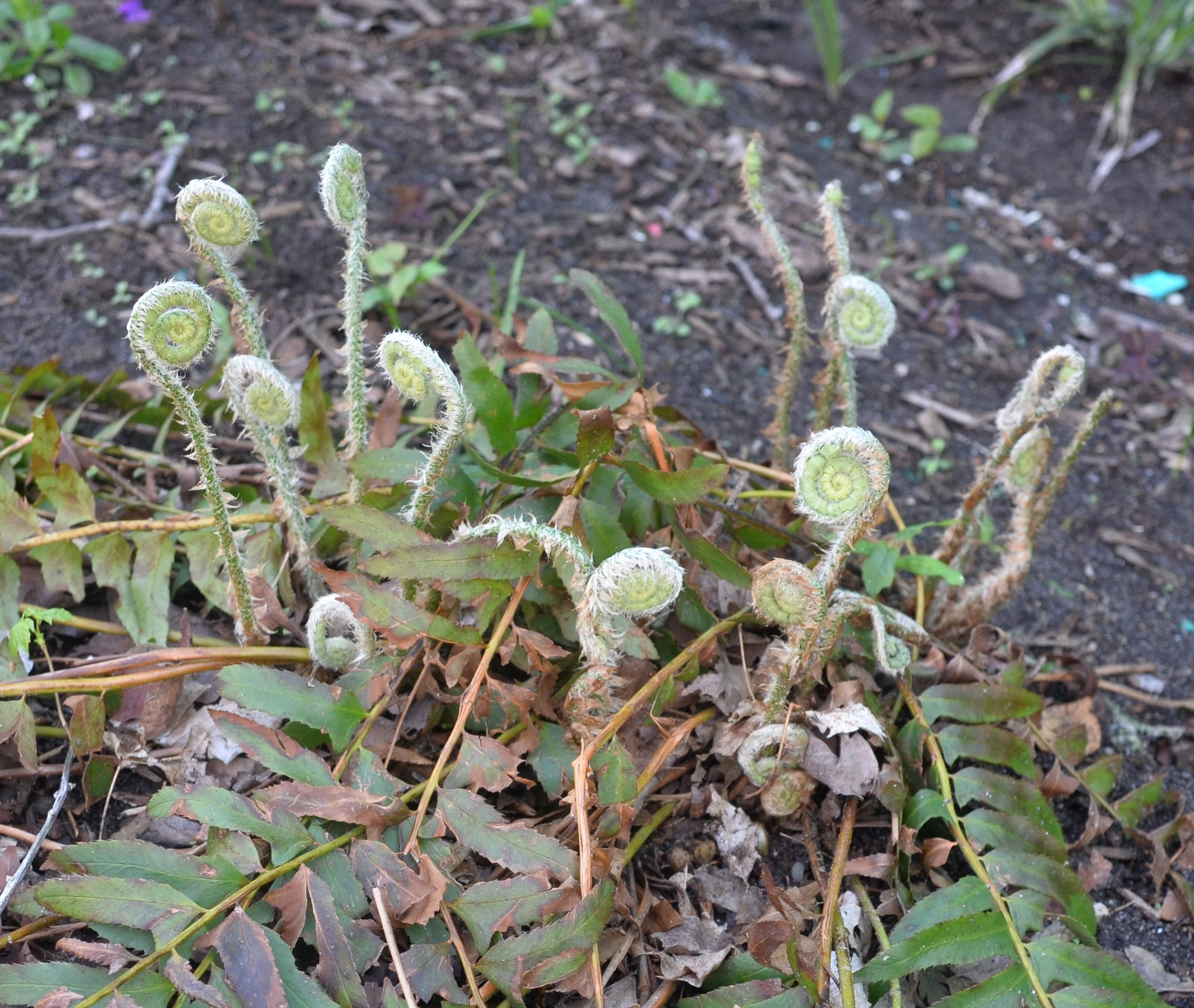


Some things that only occurred in ones. A caddisfly, which I thought was a moth last year; a forktail damselfly; a dustywings (a relative of the lacewing); one of the many feral cats in the neighborhood.
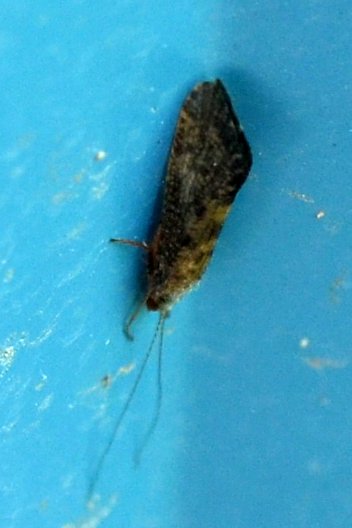

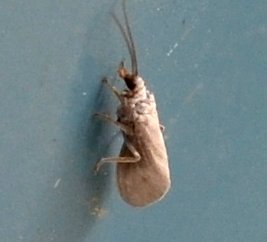
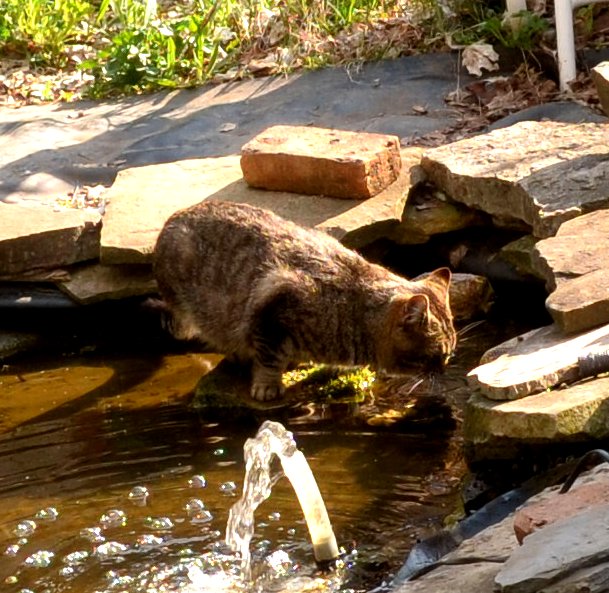
The fly family was out in style. Here's a generic black fly, one of so many! Next, a large cranefly, which looks like an enormous mosquito, but isn't. I believe this one is eating a smaller prey. This one doesn't quite make it in the camouflage department, but here is the same kind of cranefly with its orange completely hidden!
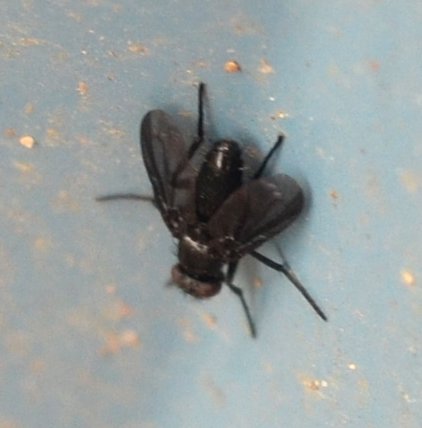
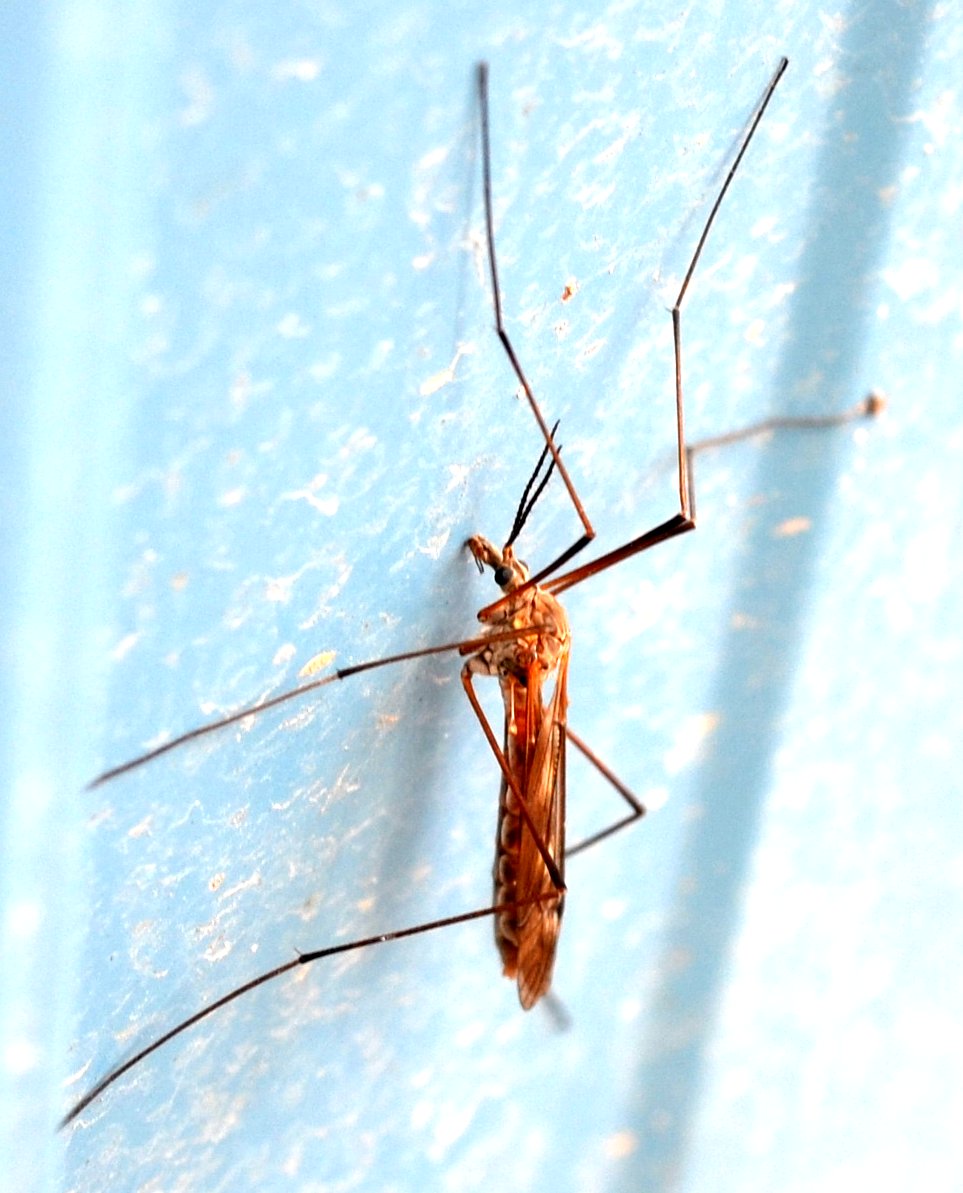
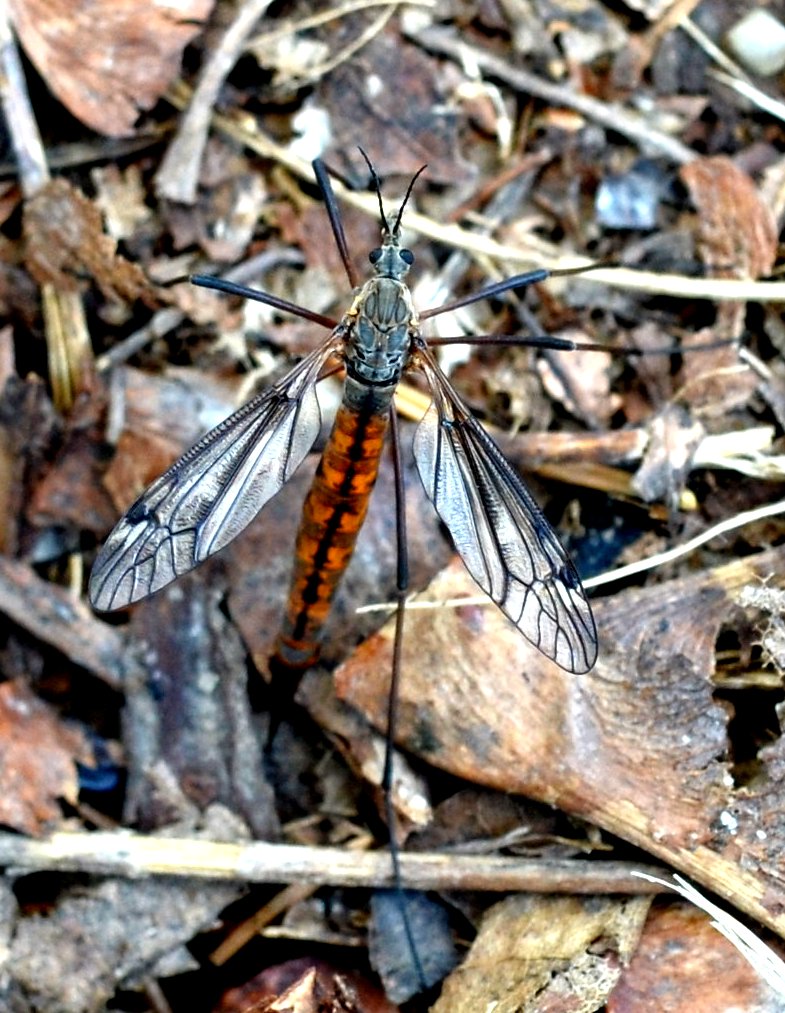
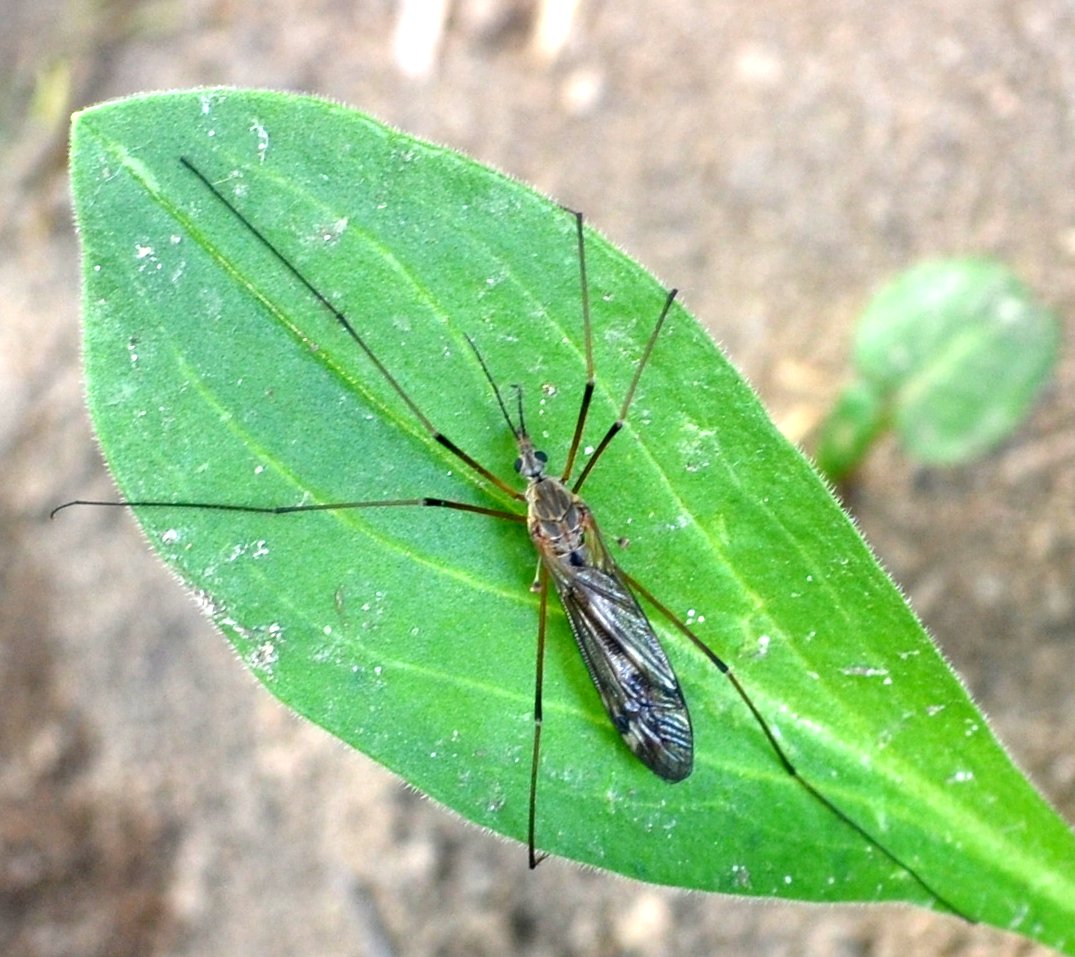
The gnats are coming in different sizes and shapes. The tiny one (maybe a gnat? } that we saw last week was back often. I think several of these are fungus gnats of various species. I love the gold and black ones. Here's a more basic one, one that we've seen often already this spring. And a mystery.
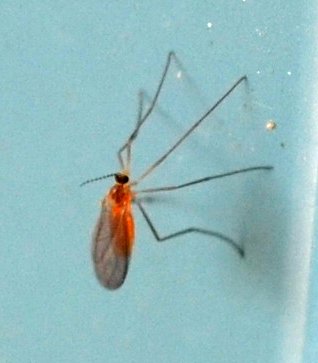 .
.
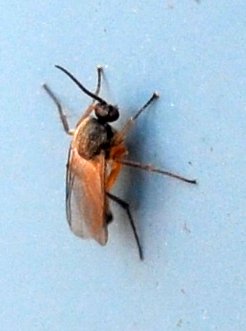
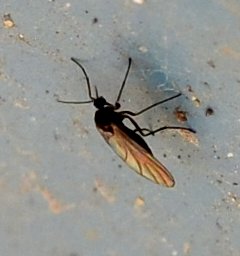
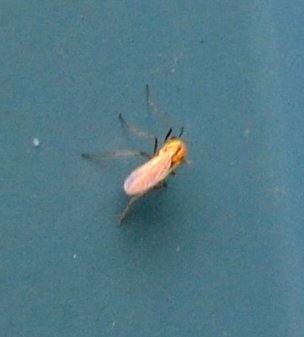
Last year I only saw female March flies, but this year many males. But here is a pair who have found true love - the big one is the female. This third image is of a female among some odd structures - my first thought was that they were eggs. Strange! In this final image the female is walking along seemingly attached to TWO males - a ménage a trois? .
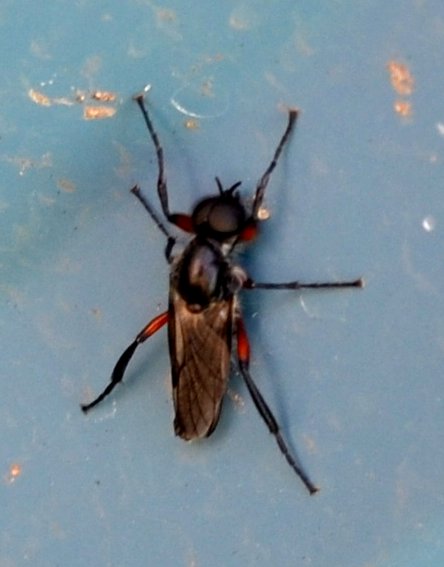
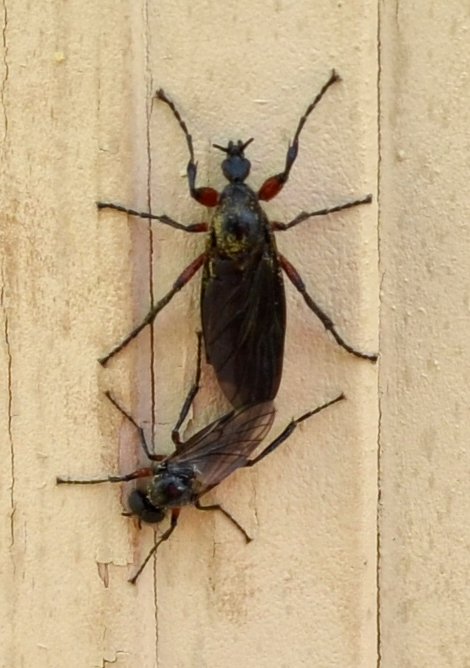
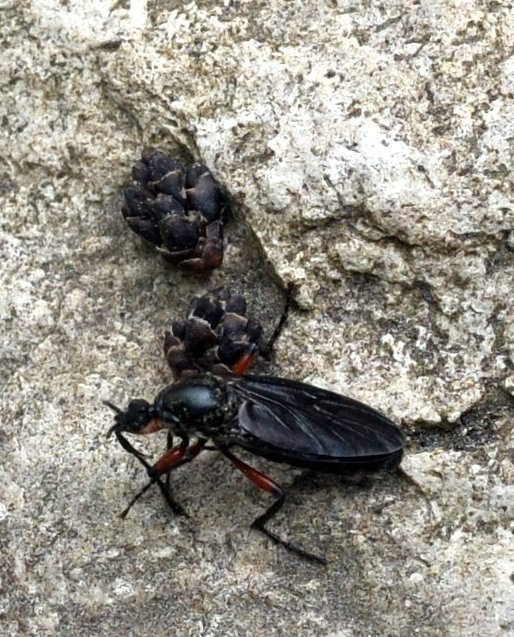
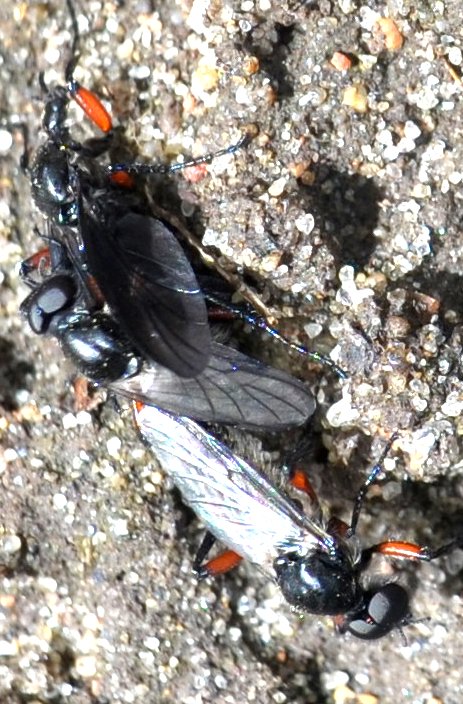
Some more kinds of flies. First a marsh fly, with its pretty red-striped head. Then an unknown (by me) but common fly. And another! But we know this is a mating pair of midges!

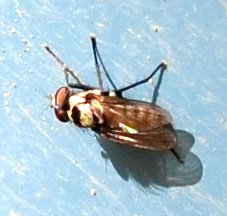


The surprise of the week was to see these little green-bodied midges. Now there are several species, but we may have one of them represented on the shop wall.
Here is the female - I believe this is ID'ed all right - mouse over for the whole name. The glorious one with the mane-like antennae is a male and I think it is the same species because they occurred the same day. Is this third one the same or did my camera suddenly start going off into fantasyland? One more fantastic image?
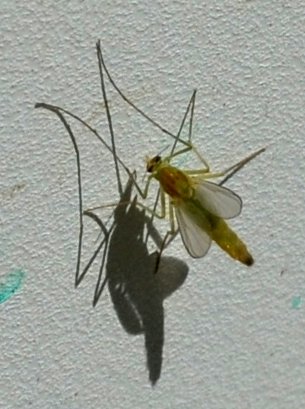
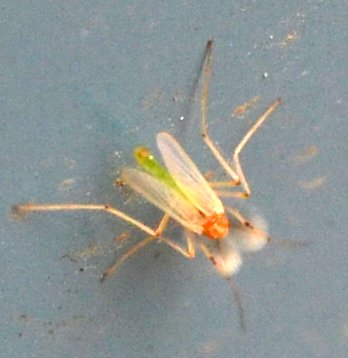
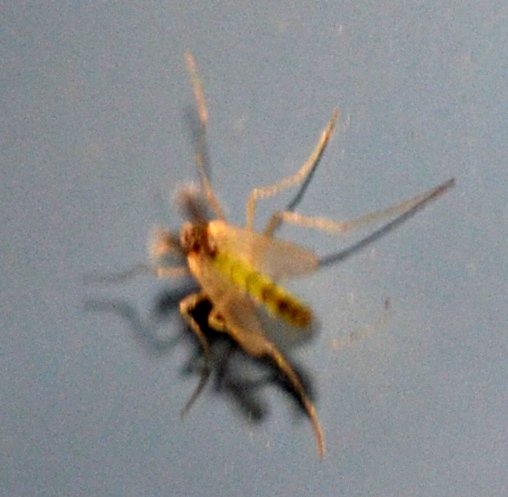
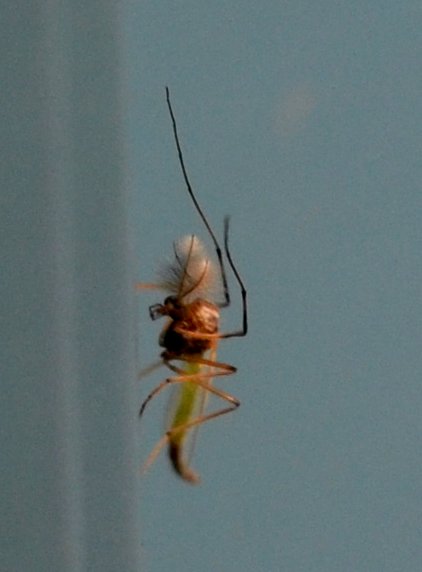
How about some spiders? The common house spiders are the most frequent visitors - they tend to stake out a position on the woodshop siding about 2 feet (about two-thirds of a meter) apart. There they start out small and gradually grow. They seem to start out looking alike, but as they grow, the males' legs and body become reddish-brown, while the females' legs are banded with black and white and their bodies look much like soccer (foot) balls. Here are a male and a young one which may retain these colors and be identified as a female. They are all voracious and tackle insects (and other spiders) much larger than themselves - this one's prey is not yet enveloped in silk and is not the largest they can handle.
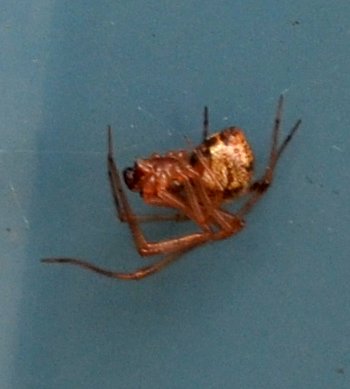
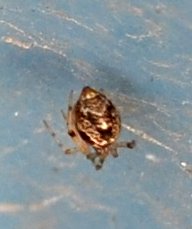
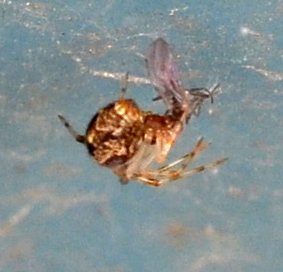
Crab spiders are also quite common. Here is a northern crab spider. I don't know what it seems to be excreting. Crabs tend to hold their rather long first two legs (on each side) closely together so that they they resemble a large crab claw. The ground crab spiders aren't just found on the ground - their legs and bodies are huskier than those of the more delicate (just plain) crab spiders. This second one was very small but MAY be a ground crab spider. Another variation, the running crab spiders, have a more elongated body. I didnt' see a clear example of a runner this week.

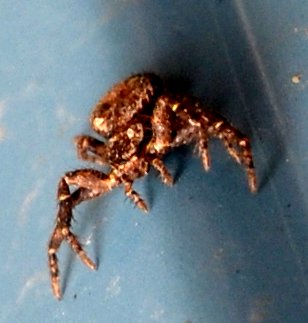
There were a few of these little jumping spiders, for which I have never heard a common name but are named Naphrys pulex in scientific parlance. There were a couple of spiders that might also have been jumpers, but I didn't get a clear view of their "headlight" eyes. This little yellow sac spider was inside the electric box where I plug in the pond pump! Some say they will give a nasty bite, but others pooh-pooh that idea. What they don't seem to do is jump at you when you try to get the camera in to see them better! All this one did was to move her little silk sac to another position in the box.
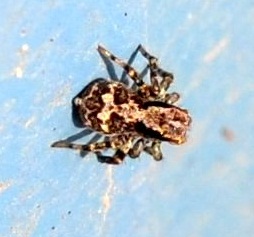
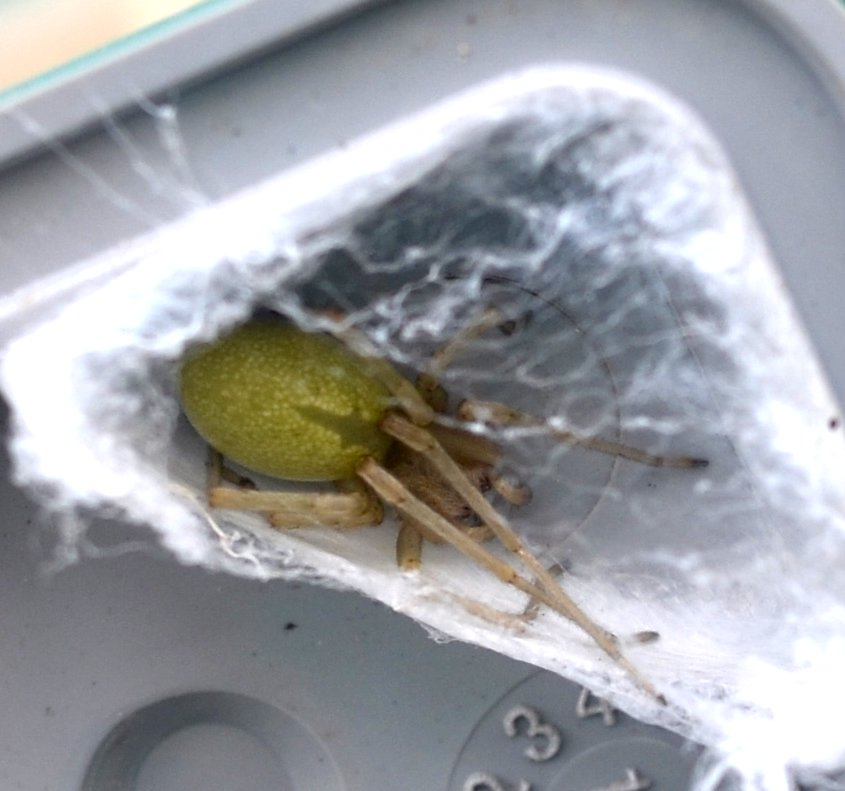
Since the spiders were a little shy this week, and I did promise you more pretty flower pictures, here they are. Here are two trillium, both what they call "sessile" since the flower "sits" right on top of the three green leaves. I've forgotten the name that came with the first one, but the second is "sessile red" or Toadshade. Here is the tip of a Solomon's Seal wildflower. The leaves are packed carefully, one folded neatly inside the other.

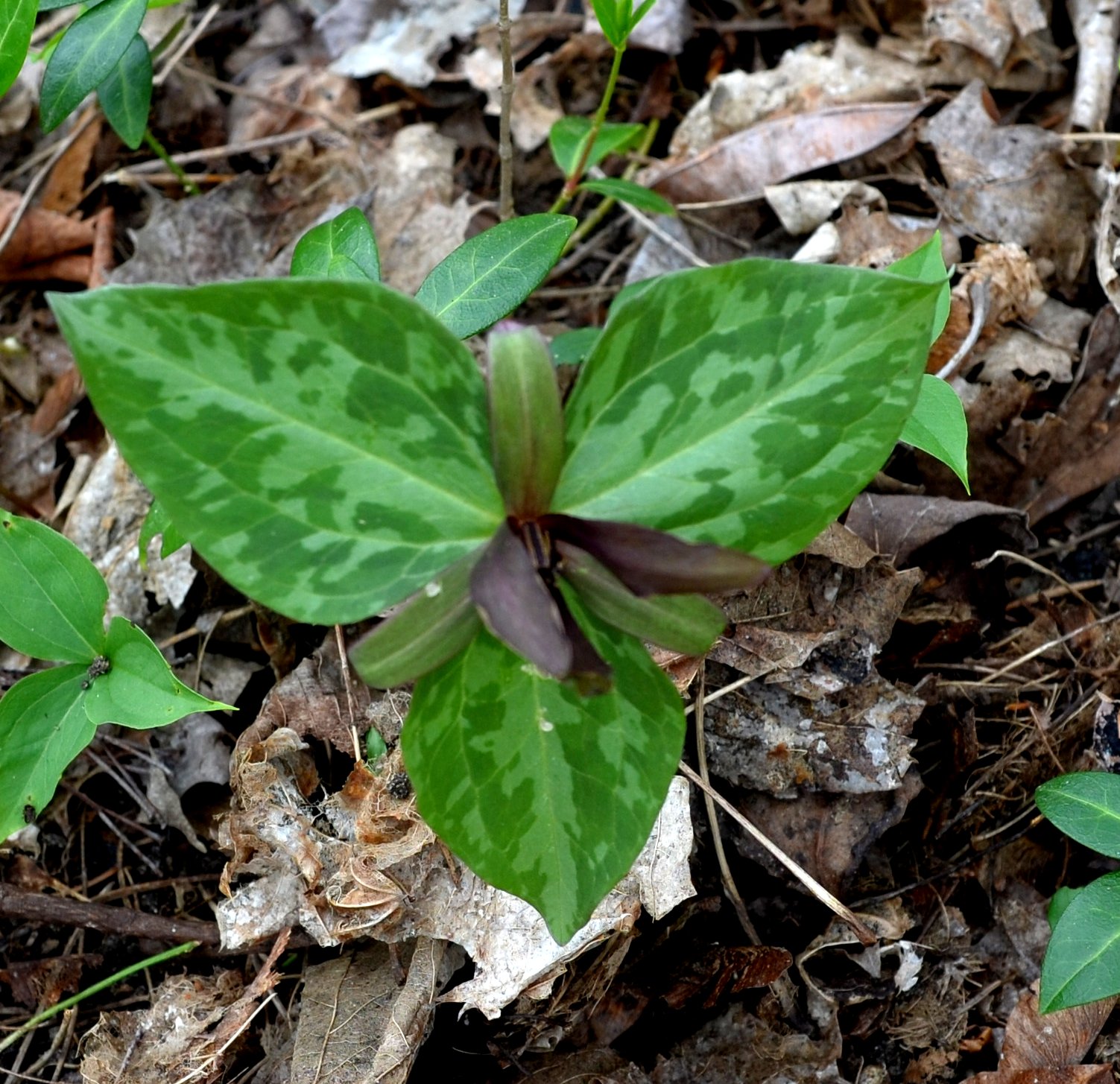

Let's end with more of the primrose variations that bloomed so audaciously this year. The first one is such a delicate pale pink just opening its first blossom. The second, an "antique" lace primrose, is as flamboyant as the first was modest. And last, a more purplish-magenta lace one. Primroses have always been one of my favorite spring flowers. They appreciate cool weather, which seems to be extending their bloom time this year. You have to baby them through the dry days, which will descend soon, no doubt.



The time is coming soon for my public talk - just in case you missed this alert! I am going to be giving a talk for AAUW with public invited at 7:00 p.m. on May 19 at Bobbitt Auditorium. It's called Nature in the Small. I'll be giving an introduction to several of the small mini-environments in the yard. For my faraway friends, I'll be posting the pictures and text as a webpage after the talk so people can see it anyway, just without my mellifluous voice. I'm very excited about this. It will be the first time I've talked publicly about the wonderful variety of creatures in the yard and how they interact with the plants and with each other. As I've been preparing this lecture, I've learned so much about the denizens of the back yard. I hope as many of my local friends as possible will come. AAUW always has good food after their programs...
Back to April 24
On to May 8
Back to 2016 menu
Back to main menu
copyright Martha O'Kennon 2016









 .
.




















 .
.



























